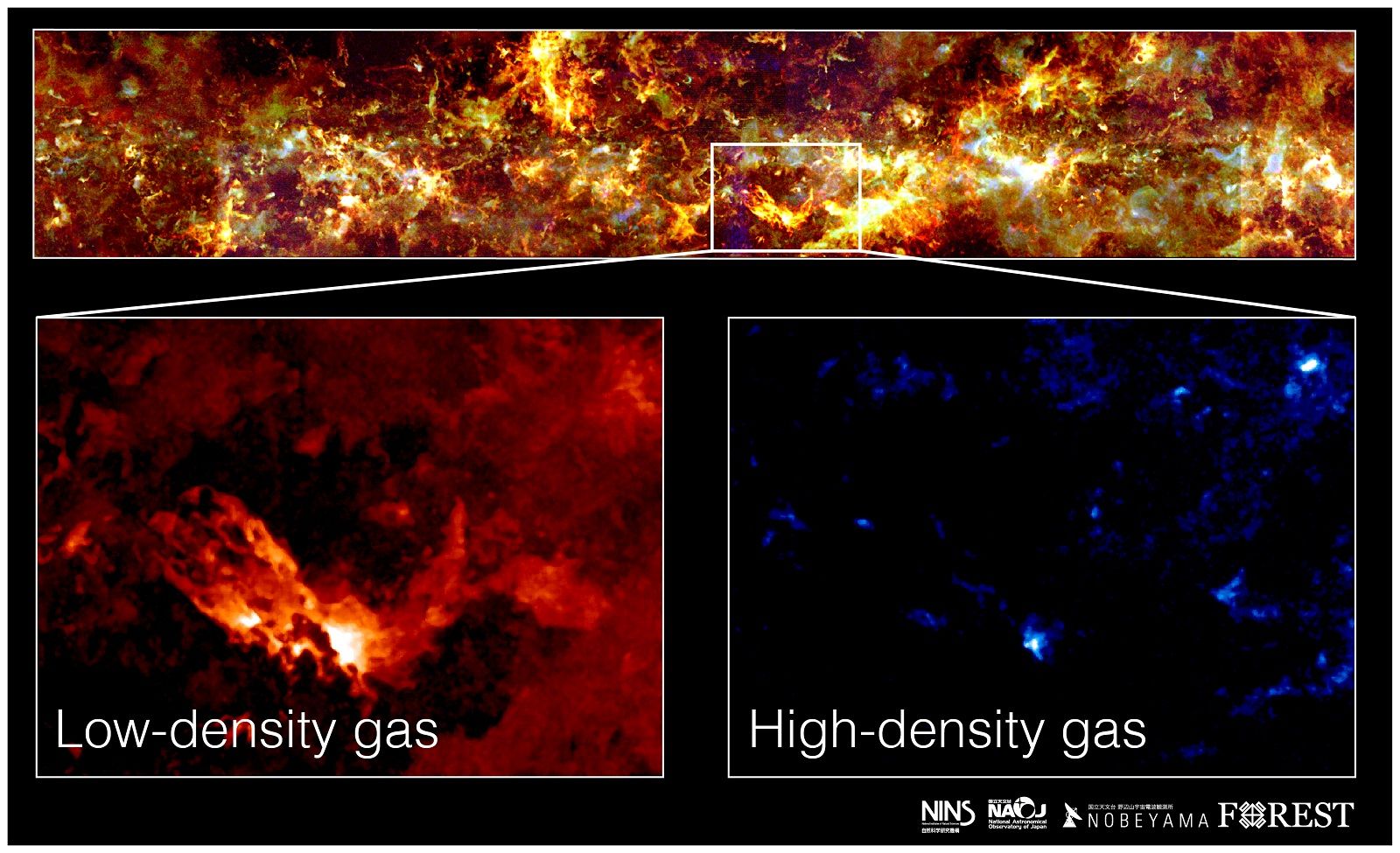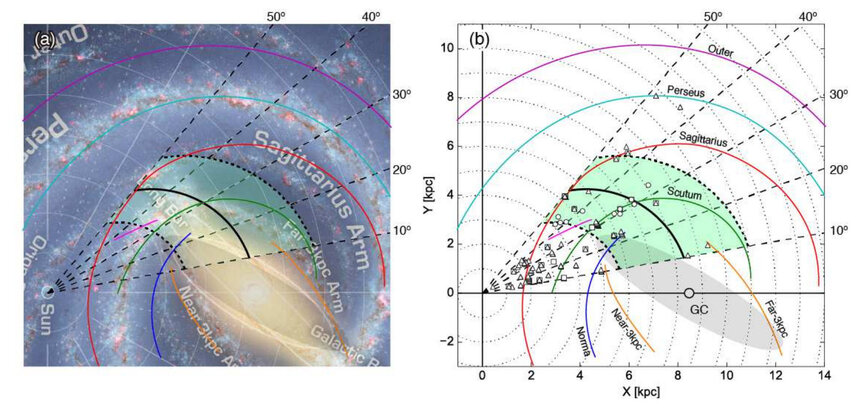Create a free profile to get unlimited access to exclusive videos, sweepstakes, and more!
When it comes to making stars, galactic gas tanks are nowhere near full

Stars, like people, are born, live out their lives, and eventually die. We understand quite a bit about all three of these phases (for stars; people are less predictable), but there is still a lot we don't know.
For example, stars are born in clouds of gas called nebulae. But there are lots of different kinds of gas clouds; stars are born where the gas is dense enough that the gravity of the gas can overcome its internal pressure, collapsing it. Many nebulae are huge, dozens of light years across or more, with fairly low-density gas in them. Only a fraction of that gas is dense enough to make stars.
Assigning a number to that fraction is important. When we look at distance galaxies we can measure the total amount of gas in them, but it can be extremely difficult to know how much of that gas will lead to star formation. We can generally measure star formation in those galaxies too (it's a long chain of logic, but in a nutshell when lots of stars are born, some (small) known fraction of them are high mass stars, and these blast out ultraviolet radiation that can be measured in a variety of ways; extrapolating from there tells you how many stars of all masses are being born there over time), and what's generally found is that stars are born at a far lower rate than you expect for the total amount of gas seen.
This problem can be resolved by getting that dense gas to low-density gas fraction. But that's hard to do in distant galaxies because they're far away and we can't resolve them sufficiently. The obvious solution is to measure this fraction in our own galaxy, but that turns out to have the opposite problem: We're inside the Milky Way, and so we see it all around us, all over the sky. There's so much of it that it's hard to see it all! Imagine looking around the room you're sitting in to try to figure out what's in it, but you have to look through a soda straw to do it. That becomes tedious pretty quickly.
To tackle this problem, a team of astronomers used a 45-meter radio telescope in Japan to survey the sky in regions where lots of gas clouds are seen. They used a detector called FOREST (for FOur-beam REceiver System), and they call their survey the FOREST Unbiased Galactic Plane Imaging survey using the Nobeyama 45-m telescope, or FUGIN*. The Milky Way is a flat disk, and we're in that disk, so we see the plane of the galaxy stretching across the sky. They looked toward a region just to the side of the galactic center, through several spiral arms, where gas clouds abound.
The survey created a lot of data — they were looking along a vast 20,000 light-year-long section of space! — and what they looked for were two different kinds of gas. One was regular old carbon monoxide, which is very common and seen in low-density gas clouds. This is called 12CO, because the kind of carbon they looked for has an atomic mass of 12 (there are six neutrons and six protons in the nuclei). They also looked for C18O, which is found in denser gas (the 18 is for an isotope of oxygen that has 8 protons and 10 neutrons in its nucleus). By doing this they could separate out the two different kinds of clouds and try to get their mass ratios.
The analysis was pretty complicated, but in the end what they found is that overall, the ratio of dense gas to low-density gas is about 3%. That's small! That means that despite there being lots of gas around, only a small fraction of it is dense enough to form stars. That goes a long way to explaining why galaxies don't make stars as rapidly as you might think. It's like driving a car with a container of gasoline in your back seat; the gas is there but not in the actual engine.
Interestingly, they found that that ratio varies wildly from place to place. In our galaxy's spiral arms the ratio is higher, about 4-5%. But closer to the center of our galaxy (especially inside the bar; a lozenge-shaped distribution of stars across the galactic center) and between spiral arms that ratio drops to a tiny 0.1–0.4%. You really don't expect to see stars forming there, and in fact we know that to be the case.
What this means is that opportunities for star birth are relatively small in galaxies. The bottleneck, apparently, is converting low-density gas into gas dense enough to collapse gravitationally. This can happen when gas clouds collide, when massive stars blow fierce winds that compress the gas, or stars explode (which can really compress the gas). These all happen, just not as often as simple assumptions would lead you to think.
I'll note that the Milky Way, on average, creates one solar mass of stars per year. That's a weird number; it's not like one star like the Sun pops into existence every year. For one thing, it takes a long time for a star to form, and for another most stars have much less mass than the Sun. So an easier way to think of it is that over a million years, say, you might get 5 million low mass stars, and far fewer higher mass ones, such that their total mass is one million times the Sun's.
We see galaxies in the Universe with much higher rates than this and some with much lower. That all depends on how well they can convert gas into stars, and how much gas they have. This changes with time, too; in the early Universe most galaxies cranked out stars, but the rate has dropped a lot with time. All of this makes figuring out how stars are born fairly complex.
This survey was a pretty good step in helping understand that, though. There's still a lot more analysis to do on the data, and a lot more sky to survey, so hopefully with more observations astronomers will be able to nail this down better.
Remember, our Sun was born from such a dense cloud 4.6 billion years ago. Studying this issue is literally trying to understand how we came to be. The Universe gives us the pieces to figure that out, and our task is to assemble them and comprehend them. I think it's a noble pursuit, and one I'm very glad so many scientists have chosen to undertake.
*That acronym is a bit of a stretch, but I can forgive them for not calling it FUGPISN.
















